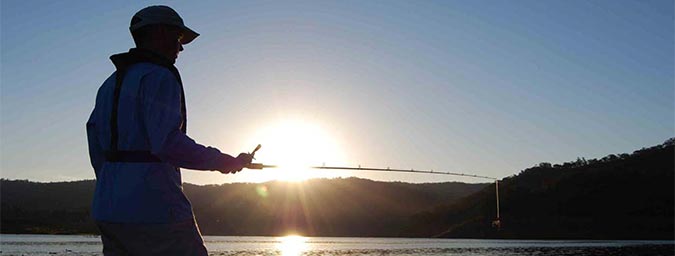Goulburn Broken Fishery Management Plan 2011

Fisheries Victoria Management Report Series No. 81
October 2011
Executive Summary
Management of Victoria's freshwater fisheries focuses on securing sustainable fish stocks and improving opportunities for recreational fishing, generating job opportunities and other socio-economic benefits in regional communities. Fisheries management plans are one of the tools used by the department to achieve these goals.
The Goulburn-Broken Fishery Management Plan specifies the objectives, strategies and actions for managing recreational fishing within the catchments of the Goulburn River, the Broken River and the Broken Creek. These waters include:
- The tributaries of Lake Eildon such as the Big, Delatite and Howqua rivers, the Eildon Pondage and the Goulburn River and its tributaries downstream to Trawool Bridge which support some of Victoria's best trout fishing
- Lake Eildon, the Goulburn River and its tributaries downstream of Trawool Bridge, the Nagambie Lakes and Waranga Basin which support productive native fish, trout and redfin fisheries
- The Broken River and Broken Creek systems including Lake Benalla, Lake Nillahcootie and Holland and Ryans creeks which support trout, native fish and redfin waters.
Major natural resource management issues in the region include: improving water quality and waterway health; improving fish passage along rivers; maintaining sufficient stream flow; managing aquatic pests; protecting native vegetation and biodiversity; and adapting to climate change. Socio-economic and demographic changes, including a growing population and expansion of the urban fringe, will continue to influence catchment health. These factors will continue to present challenges and opportunities for recreational fishing.
A review of the previous management plan for the region, the Goulburn Eildon Fishery Management Plan, provided important background information for the development of this new plan.
Four key objectives are specified in this new plan:
- Improve and increase recreational fishing opportunities in the Goulburn-Broken catchments
- Sustainable management of fisheries resources
- Maintain and improve fish habitat
- Ensure governance and compliance with fisheries management arrangements.
Contained within these objectives are a number of priority actions:
- Assessing the status of the Goulburn-Broken fishery
- Identifying new fishing opportunities
- Identifying opportunities to maintain and improve access to regional fisheries
- Establishing monitoring programs for trout and native fisheries
- Stocking fish to support great recreational fishing opportunities
- Advocating for the improvement and protection of important fish habitats
- Applying the Inland Waters Recreational Fishing Classification: Building Better Fisheries in Victoria, which classifies Victorian rivers, streams and impoundments based on native, trout and mixed fisheries.
- Assessing recreational fisher satisfaction and preferences in the Goulburn-Broken fishery
- Establishing the Goulburn-Broken Fishery Reference Group to oversee the implementation of this fishery management plan
- Establishing partnerships and engaging with other government and non-government agencies and organisations.
This management plan has a significant focus on the present management of fisheries in the Goulburn-Broken Catchment. It also sets a pathway that extends beyond its duration by:
- Advocating for the installation of fish passageways at the Goulburn Weir and other key locations
- Establishing a world-class fishery for native fish in the Nagambie Lakes
- Maximising the long-term social and economic benefits of recreational fishing
- Maximising the benefits of fish stocking programs
- Developing strategies that guide the recovery of fish stocks after drought and natural disaster
- Expanding the range of available fishing opportunities
- Improving and maintaining angler access to waterways
- Assisting in the recovery of threatened fish species
- Engaging with stakeholders of all cultural backgrounds
- Building partnerships with other government and non-government agencies.
This management plan will be reviewed approximately five years after its declaration to ensure it remains relevant to managing the Goulburn-Broken fishery.
Contents
- Introduction
- The Goulburn-Broken catchment
- Regulatory and policy framework
- Managing the Goulburn-Broken fishery
- Objective 1: Improve and increase recreational fishing opportunities
- Objective 2: Sustainably manage fisheries resources
- Objective 3: Maintain and improve fish habitat
- Objective 4: Governance/ compliance with management arrangements
- Acknowledgements
- References
- Appendix 1: Preparing the Goulburn-Broken Fishery Management Plan
- Appendix 2: Further reading
- Appendix 3: Fish stocked in the Goulburn-Broken fishery: 2006- 2010
- Appendix 4: Summary of the Goulburn-Broken Fishery Management Plan
- Appendix 5: Ministerial guidelines
